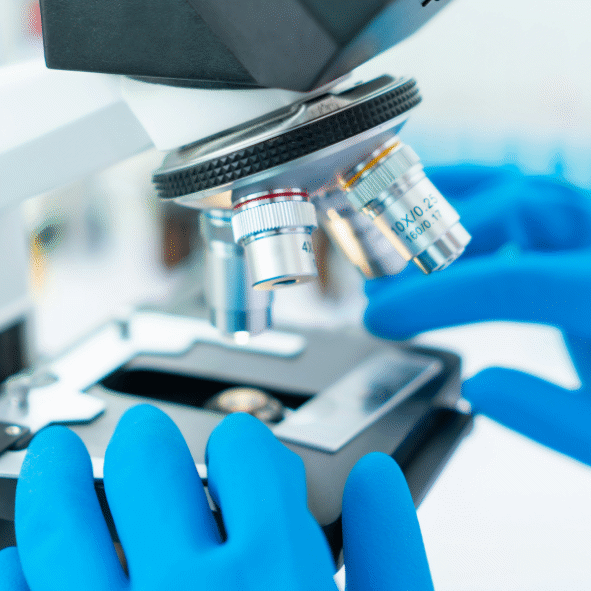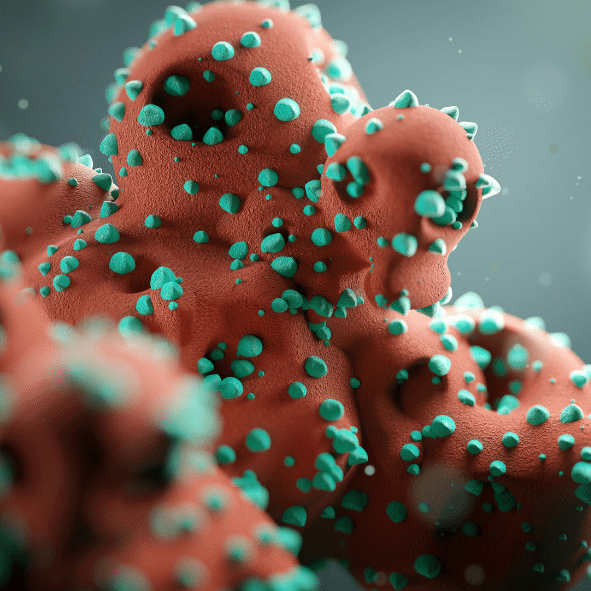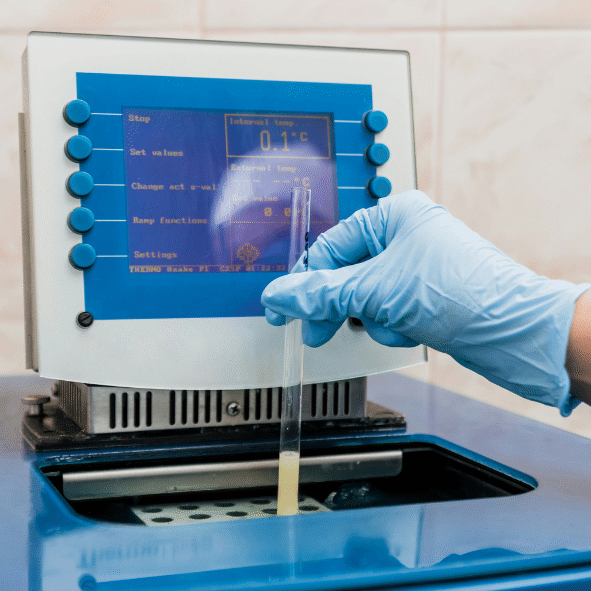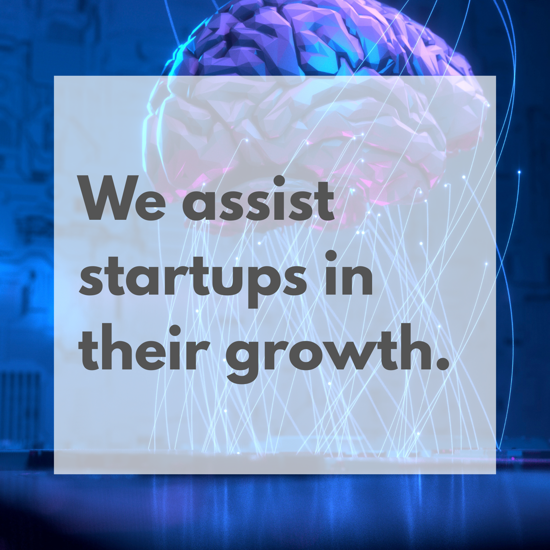Law no. 95/2006 on Health Reform is the fundamental legislative act that regulates the healthcare system in Romania. It establishes the legal framework for the organization, operation, and financing of medical services, health insurance, medical professions, and related institutions. The law promotes the principles of equity, universal access, decentralization, and responsibility in healthcare service delivery, with the main goal of improving the population's health and enhancing the efficiency of the healthcare system.


In focus: Health and Life Sciences
Our long-term vision, set out in the Smart Specialisation Strategy, states that Romania’s North-West region has the potential to become one of the most innovative areas in Central and Eastern Europe over the next 10 years — driven by research and innovation, the valorization of scientific results, economic growth, and a rising number of specialists in healthcare and related industries. In the coming years, INNO’s strategic focus is on growing the number of startups in health and life sciences while strengthening the regional healthcare system. Innovation thrives when people and organizations work together. Our key role is to connect regional actors who can collaborate to improve medical services and build the best solutions.
Investment Opportunities
Telemedicine & Digital Health Services – Remote medical services are expanding, including remote monitoring and online consultations.
Medical Biotech & Genomic Research – The use of bioinformatics in oncology and personalized genetics is backed by academic research (UMF Cluj, UBB) and EU priorities. The RIS3 North-West strategy names oncology-focused bioinformatics as a key domain.
Biomedical Engineering & Medical Devices – Designing diagnostic equipment (e.g. biosensors, smart surgical tools) blends local technical research with growing medical market needs.
AI in Medicine – AI applications for imaging and automated diagnostics are speeding up personalized care.
Nutraceuticals & Dietary Supplements – The development of health products (probiotics, herbal supplements) taps into local heritage (mountain medicinal plants) and rising global wellness demand.
Medical Tourism & Wellness – Spa resorts like Băile Felix can be modernized for recovery treatments and wellness, attracting international patients.
Rehabilitation & Assistive Technologies – Robotic recovery equipment (exoskeletons, VR rehabilitation) can be developed through research partnerships, with strong export potential.
Public Health Data Analytics – Big data and AI solutions for epidemiological analysis and population health management meet growing research and prevention needs.
Wearable Devices – Health monitors (smart bands, cardiac sensors) can be created by local startups, leveraging the global trend of self-monitoring.
Pharmaceutical Production & Bioproducts – Facilities for generic and biosimilar drugs can attract investment, benefiting from low production costs and regional medical know-how.
Advanced Veterinary Services – High-tech veterinary diagnostics and treatments (imaging, minimally invasive surgery), supported by agronomic research, enhance the livestock sector.
Looking to invest in health?
Context
Over the past five years, the health and life sciences sector in Romania’s North-West region has experienced strong momentum — marked by business growth, expansion investments, innovation, and rising pharmaceutical exports. The combined turnover of leading companies in the field has followed an upward trend. Economically, the health sector is a key contributor to regional GDP through public and private healthcare services, the pharmaceutical industry, and related activities such as drug distribution, laboratories, and medical equipment manufacturing.
People in the North-West place a high value on healthcare. The region ranks second after Bucharest in terms of investment in medical services, with monthly health spending nearly twice as high as in the West region. Out-of-pocket health expenses are significant in Romania — in 2021, 21% of total health spending came directly from households, compared to just 15% in the EU. This makes the medical market attractive for business. Nearly two-thirds of these expenses go toward medicines, which explains the high number of pharmacies and the sector’s commercial potential.

Innovation and entrepreneurship
The region has emerged as a HealthTech startup hub, especially in Cluj, driven by the convergence of strong IT and medical communities. The number of local startups in telemedicine, smart medical devices, and healthcare software platforms has grown, supported by dedicated programs. Exports in pharmaceuticals and medical devices from the region have also followed an upward trend. Additionally, the production of medical materials and equipment saw a boost during the pandemic. Overall, the 2018–2023 period was marked by robust growth and structural transformation: major companies became more competitive and export-oriented, the private medical services sector saw a wave of investments, and the innovation ecosystem strengthened. These positive developments have placed the North-West region on an upward trajectory, paving the way for increased future investment appeal.

Companies
In 2023, the North-West region was home to 3,492 businesses in the health and social care sector, accounting for 12.7% of all companies in this field nationwide. A complementary sector—pharmaceutical manufacturing and retail—also includes a significant number of companies ranked among the top by revenue. Although the sector benefits from above-average profit margins (the average profit rate for Romanian companies is 19%), the number of new businesses remains low, with only 4–5% of startups entering this space. The private healthcare system in 2023 included 34 private hospitals with 1,937 beds, 2,572 dental clinics, 1,296 specialized medical practices, 1,178 pharmacies, and 435 dental labs. However, the distribution of medical facilities remains uneven. While large cities continue to attract healthcare investments, people in smaller towns still lack access to nearby medical services.

Workforce
According to the National Institute of Statistics, Romania has nearly 73,000 doctors—double the number from the 1990s. When it comes to young doctors under the age of 35, the latest Eurostat report ranks Romania second in the EU, just after Malta. In the North-West region, there were 59,608 employees in the health and social care sector in 2023, with women making up 79% of the workforce. This included 9,612 physicians, 3,202 dentists, 2,973 pharmacists, 17,136 nurses, and 11,342 auxiliary healthcare staff. Most dentists, general practitioners, and pharmacists work in the private sector. However, it remains unclear how many doctors work both in public and private institutions, as moving between state hospitals and private clinics has become a common trend in the Romanian healthcare system.

Average Wage
In the region, the average net monthly salary in the health sector is RON 4,432. In 2024, the Romanian government approved significant base salary increases for healthcare workers: nurses and orderlies saw a 40% rise, stretcher-bearers received a 45% increase, while resident doctors, biologists, chemists, psychologists, and physiotherapists benefited from a 25% raise. Specialist and senior doctors had their salaries increased by 13%, although their overall pay and bonuses remain significantly higher than other categories. While private healthcare providers do not disclose salary levels, a study by Medijobs—Romania’s largest medical recruitment platform—shows that entry-level doctors in mid-sized and smaller cities like Bistrița and Baia Mare earn higher salaries than those in larger cities. This wage growth is driven by the shortage of doctors in less urbanized areas.

SMEs supported through the Regional Operational Programme (ROP)
SMEs need European funding to become competitive both at the regional and European levels. A call dedicated to tourism and healthcare offers up to 1.5 million euros in non-reimbursable funding for 37 companies with promising projects. So far, 8 projects have already been contracted and are being implemented, while 12 others are in advanced approval stages. The total value of signed contracts is close to 15.5 million euros, and in the coming years, these investments will bring modern equipment, new jobs, and quality healthcare services to the community.

Education
Romania trains healthcare professionals well above the EU average, but migration remains a challenge. In 2022, Romania recorded 4,963 medical graduates (26.1 per 100,000 inhabitants, much higher than the EU average of 15.5). The number of dental medicine graduates was 9.86 per 100,000 inhabitants, the highest in the European Union. Additionally, there were 7.26 medical graduates and 6.77 pharmacists per 100,000 inhabitants. However, migration of medical staff (both new graduates and experienced professionals) has contributed to the low number of healthcare professionals currently working in Romania. (Eurostat & State of Health in the EU) In the North-West region, healthcare graduates are trained at the “Iuliu Hațieganu” University of Medicine and Pharmacy in Cluj-Napoca and the Faculty of Medicine at the University of Oradea.

R&D
In Cluj-Napoca, there are six public institutes (the “Prof. Dr. Ioan Chiricuță” Oncology Institute, the “Nicolae Stăncioiu” Emergency Heart Institute for Cardiovascular Diseases, the Institute of Urology and Renal Transplantation, the University Hospital/Clinic CFR Cluj, the “Prof. Dr. Octavian Fodor” Regional Institute of Gastroenterology-Hepatology, and the Clinical Recovery Hospital) conducting research activities, alongside higher education institutions. In addition to these, there are also private R&D units operating in the healthcare field, though in smaller numbers. National data show increased interest in pharmacology and oncology. The accredited technology transfer entities for activities in this field are the Technological Information Center CIT INCDTIM Cluj-Napoca (health and food safety) and the Technological Transfer Center Cluj-Napoca INOE 2000 (medical equipment).

Challenges
• Lack of medical staff, especially in rural areas, due to the migration of healthcare professionals and graduates. • The healthcare system is underfunded. • Fragmented healthcare infrastructure. • Slow implementation of infrastructure projects, despite the available funding through PNRR and other European funds. • Excessive bureaucracy and inconsistent policy application, which hinders the progress of healthcare reforms. • Research activities are poorly correlated with the real economy. • Complex legislative framework, strictly regulated prices, and additional taxes.
Legislative context
 EU Legislation
EU Legislation
 The Health Reform Act.
The Health Reform Act.
 National Health Strategy for the 2023-2030 period "For Health, Together"
National Health Strategy for the 2023-2030 period "For Health, Together"
 Government Emergency Ordinance that defines the base salaries of personnel in the healthcare system
Government Emergency Ordinance that defines the base salaries of personnel in the healthcare system
The EU complements national policies by helping governments achieve common goals, pool resources, and overcome shared challenges. EU policy focuses on protecting and improving health, ensuring access to modern and effective healthcare for all, and coordinating responses to serious multinational health threats. Disease prevention measures and appropriate responses to their emergence are also crucial for the EU. These measures include, among others, vaccination, combating antimicrobial resistance, cancer actions, and responsible food labeling.
The National Health Strategy 2023–2030, approved by Government Decision no. 1.004/2023, sets the strategic directions for improving the health of Romania's population. The document aims to strengthen the healthcare system by promoting equity in access to medical services, disease prevention, digitalizing healthcare infrastructure, and developing human resources. The strategy emphasizes the importance of inter-institutional collaboration and the involvement of local communities in implementing health policies, with the main goal of improving quality of life and reducing health inequalities nationwide.
NATIONAL HEALTH STRATEGY 20/10/2023
Emergency Ordinance No. 19/2024, issued by the Romanian Government and published in the Official Gazette No. 202 on March 11, 2024, introduces measures regarding the salaries of personnel in healthcare, social assistance, and other budgetary sectors. The regulation provides for phased salary increases for these categories of staff, starting in March 2024, in order to address staff shortages and reduce migration to other sectors. The measures are motivated by the need to ensure the continuity of essential public services and eliminate salary inequalities resulting from selective increases in 2023.
Linkuri utile


